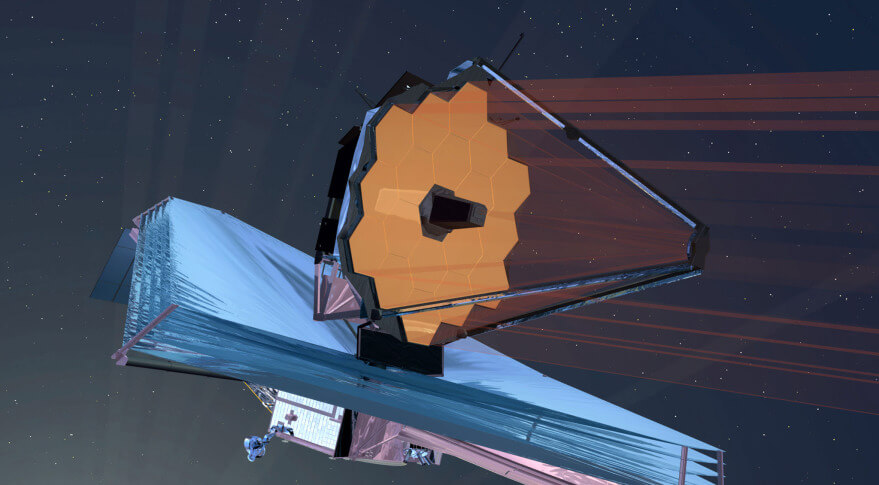
Edition of Space News, citing a report of the accounts chamber of the United States, submitted on 28 February, reports that the space telescope “James Webb” space Agency NASA can with high probability to face additional delays and postponements of the launch. Provided to the us Congress, the document States that the development of the spacecraft has exhausted almost all resources and it is therefore possible that the telescope will not be launched into space within the allocated window until June 2019.
The development of the space telescope “James Webb” (JWST) has been ongoing for many years. Initially the device was planned to start in 2014, however, excessively high costs for its construction and serious schedule delays forced NASA to postpone the anticipated date of the start of the mission the first of September 2015, October 2018. However, in September of 2017, NASA announced that the launch carries on for another term. This term was supposed to be a window between March and June 2019. According to the Agency, at this point, all work on the spacecraft was already planned to complete.
A new window run gave the team an extra four months to prepare the telescope to work. However, in a recent report, the accounts chamber of the USA says that shortly after the announcement of the new start time project managers learned that the company Northrop Grumman (is the developer of the JWST by order of NASA) can take an additional three months. This conclusion was made “according to the test results in the deployment of elements of the telescope, as well as checking sunglass mirror”, while the Agency conducted a test of the optical system of the telescope and its scientific instruments.
In fact, serious problems started to occur in 2016. Then, after the vibration tests conducted by NASA engineers said that there are certain anomalies in the work. Go into details the Agency did not, but it forced him to conduct a detailed inspection of the telescope, as these anomalies could also indicate possible damage or cracks in scientific instruments apparatus or its housing.
It was later revealed that the source of the problem lies not in the design of the telescope, and in the special fasteners that hold the mirror petals in place, not allowing them to be deployed. Recall that the “James Webb” has a team structure. The telescope is just huge, so space is scheduled to be send folded. The large 6.5-meter mirror device and a similar sized screen, to protect it from sunlight, is divided into three parts, which are to be deployed when the telescope out into space.
The problem with these fixtures, the engineers tried to solve during the past year, that actually “ate” all the backup time, which was originally incorporated in the program of construction in the event of any unforeseen circumstances.
Currently, the Northrop Grumman employees working on JWST in three shifts 24-hours a day. Since September of last year, the size of the labor force allocated to the project telescope, is already five times higher than the original figures.
In the opinion of the Board of the accounting chamber, this can lead to the fact that the launch of the Observatory will be held until the summer of 2019. And then only if all other phases of testing and preparing the machine to run will be perfect, without any hitches or delays. It is hard to believe, so the launch of the “James Webb” can be postponed to the second half of 2019, or even at the beginning of 2020.
“It will be very hard to stay within the current program start the mission. We hope that we will complete all the checks and launch the telescope into space in about a year and a half,” commented Greg Robinson, Deputy head of the science mission Directorate at NASA.
What does it mean? This means that the project will once again go beyond the budget, which in turn may lead to conflict between NASA, Congress and the White house have expressed a desire to invest new funds in the program of lunar exploration, and not in a new scientific space projects.
Additional complexity can create and what the auditors believe NASA’s mission management the main culprits in the appearance of these delays, as they have ignored the recommendations of the space Agency’s calculation of all risks, which were announced back in 2012, after the first postponement of the launch of “James Webb”.
The launch of the space telescope “James Webb” was again postponed
Nikolai Khizhnyak